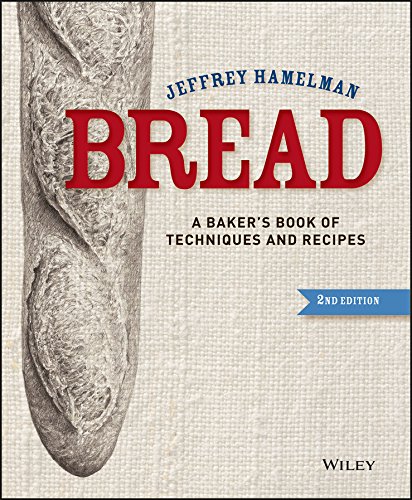Bread Baking for Beginners is available on Amazon, on kindle, and at Barnes & Noble.
You can find details about the contents and over a thousand 5 star reviews on amazon by clicking the link.
Looking for a list of recommended supplies and materials to get started baking? Scroll down this page.
Finished with my book and ready to branch out into more bread baking? Here are some of my favorite books:
This book has a fantastic breadth and depth of recipes from sourdough breads, to pastries, savory goods, and other cooking recipes like salads and sandwiches. It is an exceptionally beautiful and inspiring cookbook. The recipes are approachable if you have a decent foundation with the basics of baking and cooking. I highly recommend this book. Croissants, galettes, puff pastry, tarts, British baked goods, all featuring different heirloom flours and intriguing flavor combinations in a simple and clean style. Lots to daydream about and make in here. The notes and tips in the margins will make you a much better baker and cook, and worth the price of the book alone.
If you made it to the back of my book and enjoyed delving into sourdough, Sourdough by Sarah Owens is a wonderful place to move forward, Her recipes are extremely creative, and she gets into all kind of unique flours and flavor profiles. If you want to get experimental incorporating sourdough across all types of baking (not just breads) this is the place to go. There is a wonderful sourdough lemon madeleine recipe in here as well that I love.
If you think you have gotten to the point that you are a serious baker and thinking about scaling up your recipes, I highly highly recommend Bread by Jeffrey Hamelman. This is an invaluable resource for working with professional formulas, scaling recipes, understanding how to schedule, ergonomics, how different ingredients effect different doughs, and all the subtle thing that need to be considered as part of the baking life. This book is extremely necessary for any dedicated baker to truly understand both the science and the craft of bread baking.
This is a hefty book, in size and in price tag. It is technically a textbook! If you are very serious about bread and pastry and can’t afford to go to culinary school, I would advise working your way through this textbook. It is absolutely advanced and professional, and covers things like formula development and all kinds of aspects of running a bakery as well as tons of great visual and photo demonstrations of advanced techniques including croissants and a wide variety of pastry work as well as in depth information on scheduling and production.
































